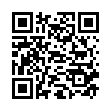|
Scientific articles
On ring solutions of neural field equations
R. Atmaniaa, E. O. Burlakovb, I. N. Malkova
a Tyumen State University
b Derzhavin Tambov State University
Abstract:
The article is devoted to investigation of integro-differential equation with the Hammerstein integral operator of the following form:
\begin{equation*}
\begin{array}{c}
\partial_tu(t,x)=-\tau u(t,x,x_\mathrm{f})+\int\limits_{\mathbb{R}^2}
\omega(x-y)f(u(t,y)) dy, \ t\geq0,\ x\in \mathbb{R}^2.
\end{array}
\end{equation*}
The equation describes the dynamics of electrical potentials $u(t,x)$ in a planar neural medium and has the name of neural field equation. We study ring solutions that are represented by stationary radially symmetric solutions corresponding to the active state of the neural medium in between two concentric circles and the rest state elsewhere in the neural field. We suggest conditions of existence of ring solutions as well as a method of their numerical approximation. The approach used relies on the replacement of the probabilistic neuronal activation function $f$ that has sigmoidal shape by a Heaviside-type function. The theory is accompanied by an example illustrating the procedure of investigation of ring solutions of a neural field equation containing a typically used in the neuroscience community neuronal connectivity function that allows taking into account both excitatory and inhibitory interneuronal interactions. Similar to the case of bump solutions (i. e. stationary solutions of neural field equations, which correspond to the activated area in the neural field represented by the interior of some circle) at a high values of the neuronal activation threshold there coexist a broad ring and a narrow ring solutions that merge together at the critical value of the activation threshold, above which there are no ring solutions.
Keywords:
two-dimensional neural field equation, ring solution, existence of solutions, approximation of solutions.
Received: 02.09.2021
Citation:
R. Atmania, E. O. Burlakov, I. N. Malkov, “On ring solutions of neural field equations”, Russian Universities Reports. Mathematics, 26:136 (2021), 363–371
Linking options:
https://www.mathnet.ru/eng/vtamu237 https://www.mathnet.ru/eng/vtamu/v26/i136/p363
|

| Statistics & downloads: |
| Abstract page: | 152 | | Full-text PDF : | 77 | | References: | 33 |
|




 Contact us:
Contact us: Terms of Use
Terms of Use
 Registration to the website
Registration to the website Logotypes
Logotypes









 Citation in format
Citation in format 